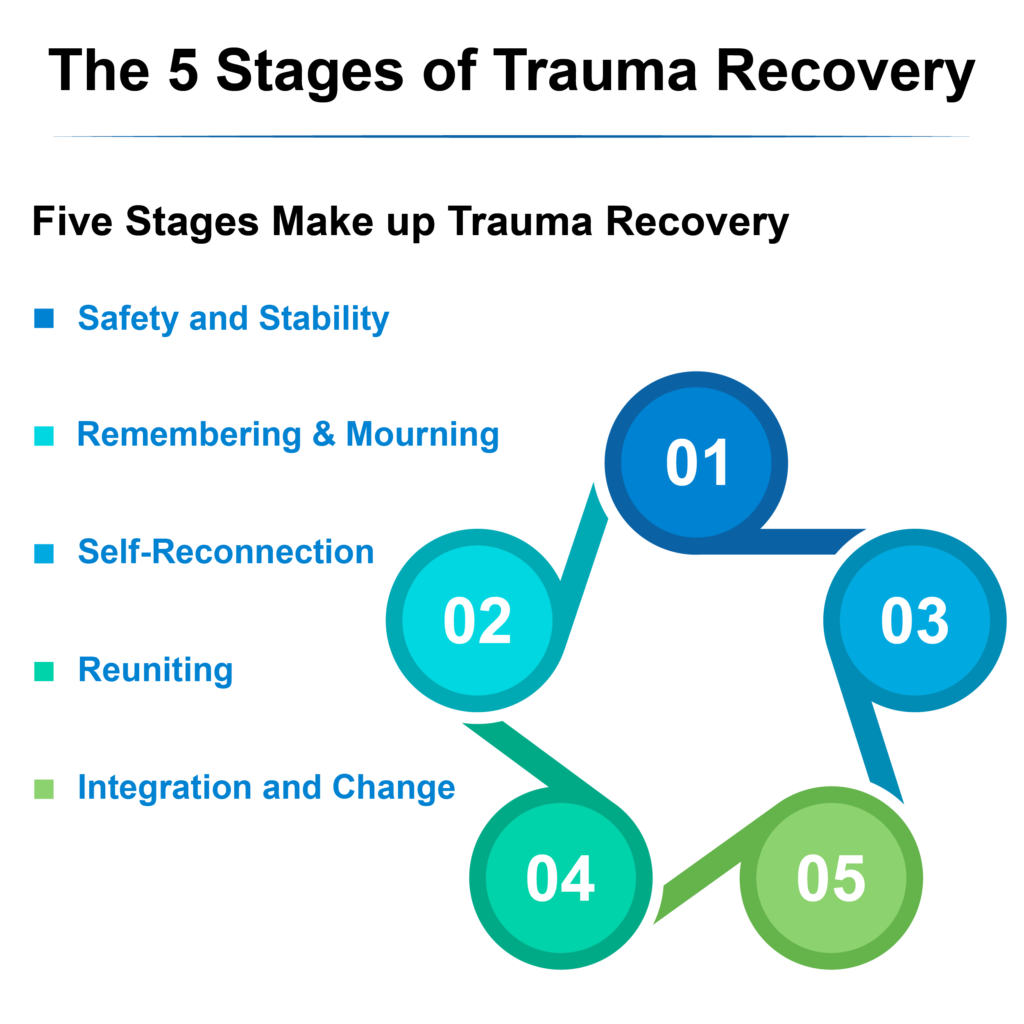Bright Point MD strives to be your health and wellness partner. We aim to help people live their best lives, and today we’ll discuss stages of trauma recovery.
The Importance of Trauma Recovery
Trauma is quiet and widespread, impacting every aspect of life. It affects the mind, body, relationships, and health. This blog will discuss trauma recovery and its importance to health and well-being. This blog will shed light on trauma recovery stages and the route to healing and resilience.
Understanding Trauma
Understanding trauma and its many forms is essential to rehabilitation. Trauma includes physical, emotional, psychological, and spiritual damage. Healing begins with understanding trauma’s scope.
Untreated trauma can cause physical and mental illness. It can cause anxiety, despair, chronic pain, and autoimmune diseases. Trauma recognition and treatment are essential to holistic healing.
Trauma Bond Recovery
Trauma bonds are complicated emotional bonds that form after trauma or abuse. These relationships can be hard to sever. Trauma bonding and its effects will be explored.
Challenges in Breaking Trauma Bonds
It takes guts to break trauma attachments. Emotional entanglement and terror are particular hurdles when trying to break these bonds.
At Bright Point MD, we understand the difficulties of dissolving trauma linkages. We provide support, information, and resources for recovery in a safe and caring setting.
The 5 Stages of Trauma Recovery

Five stages make up trauma recovery. The stages of healing guide people from pain to strength and transformation.
First: Safety and Stability
Stage 1 emphasizes safety and stability. Trauma destroys security, putting victims in perpetual fear and vulnerability. This step entails creating a physically and emotionally safe space for people to retake control. The rehabilitation process is built on it.
Second Stage: Remembering and Mourning
Face and process distressing memories in Stage 2. As people remember and face their experience, it’s difficult. Remembering and mourning helps release emotions and achieve closure.
Third Stage: Self-Reconnection
Fourth Stage: Reuniting
Stage 4 works on repairing relationships. Trauma can cause isolation and distrust. This stage teaches people to repair relationships, set boundaries, and build healthy ones.
Fifth Stage: Integration and Change
Stage 5 concludes the healing process. It entails applying healing principles and turning trauma into personal growth and resilience. It’s about moving forward with newfound purpose and self- and other-connection.
Bright Point MD's Approach to Trauma Recovery
Every step of trauma rehabilitation is supported at Bright Point MD. Our trained specialists offer therapy, counseling, and holistic techniques customized to individual needs. We know everyone’s path is different, so our services meet their particular challenges.
Our Approaches and Therapies
Our creative and holistic trauma rehabilitation methods set Bright Point MD different. To provide comprehensive recovery, we use mindfulness, art therapy, and body-centered practices. These methods help people heal psychologically, emotionally, physically, and spiritually.
Conclusion
Trauma recovery stages must be understood and navigated for healing. To make this trip as successful and transformative as possible, seek professional assistance and support like Bright Point MD. Each stage is crucial.
Trauma rehabilitation involves mending old wounds and recovering your life. A journey of self-discovery, resilience, and transformation.
Remember that professional aid is available for trauma sufferers. Reach out to competent specialists for help and direction on the recovery journey. Bright Point MD will support you along your recovery and wellness journey.
Read More: A Roadmap and Understanding Dementia Before Death
FAQs
A trauma bond is a deep emotional connection between a person and their abuser, often after chronic abuse. It can occur in abusive relationships or with manipulative family members.
Dependence on the abuser, difficulty leaving, misunderstanding about the relationship, and a strong emotional connection despite destructive actions are signs of a trauma bond. Physical symptoms like anxiety and depression can occur.
Breaking a trauma bond requires self-awareness, treatment, and support. Recognizing the relationship, getting professional help, developing a support network, and improving self-esteem and self-worth are common steps.
CBT, DBT, and EMDR can improve trauma bond recovery. A qualified therapist can customize the strategy.
Many people recover from trauma bonds and live healthy, productive lives. A thriving post-trauma existence entails healing emotional wounds, setting boundaries, regaining self-esteem, and forging respectful, supportive relationships.

